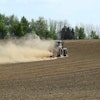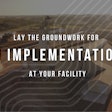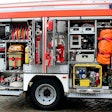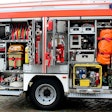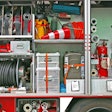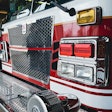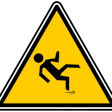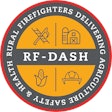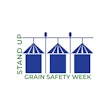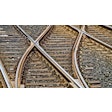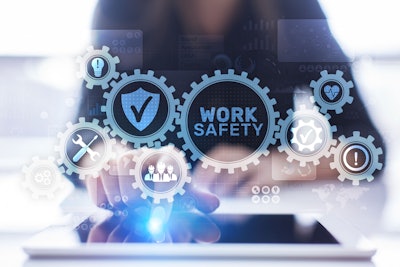
Purdue University’s Agricultural Safety and Health Program recently released its “2023 Summary of U.S. Agricultural and Confined-Space Related Injuries and Fatalities” report, which showed a 36% decrease in grain entrapments. Though not the only important worker safety stat, it showcases the success of a decades-long effort by the industry to make working in facilities that handle grain safer to work in for employees. It’s a success the industry should celebrate and feel pride in, but not be content with.
Everyone wants employees to go home safe; that’s the most important thing. But injuries can also lead to downtime, being short staffed and even fines or lawsuits, making even minor ones a risk to feed or grain operations. But a solution to an even safer work environment is starting to emerge: wearable safety technology.
Wearable safety tech is making a big difference, giving companies new ways to protect workers and make work safer. These small devices, often as tiny as a matchbox, are changing how businesses handle job safety in many fields.
The rise of digital PPE
Leading this change is "digital PPE" – safety gear with sensors that collect data. Unlike old-school safety equipment, these wearables keep an eye on what's around workers, giving quick updates about possible dangers and risks.
"We're making safety personal," said Brett Burkhart, certified occupational safety specialist at MākuSafe, who knows a lot about wearable safety gear. "It's about getting what's going on around each worker, both in their surroundings and with their body."
These gadgets have lots of sensors that can spot many things in the work area. They check air quality, noise, heat and moisture, giving a full picture of job conditions. Also, they keep an eye on physical aspects of a job, such as risky movements or forces that might hurt muscles and bones over time.
Staying ahead of dangers
One of the key benefits of this tech is its power to give early warning signs of danger.
"We're not trying to react to the next incident," Burkhart said. "We're using technology to prevent that first person from having to go through a negative experience."
This forward-looking method is shaking up the work of safety managers. Instead of depending on after-the-fact signs like accident reports, they can now get instant alerts when a worker is getting close to safety limits. For example, if an employee is about to hit their daily noise exposure cap, bosses can be notified right away, letting them step in before any harm happens.
Building a safety-first mindset
This technology has an influence on more than just accident prevention. It's creating a safety and openness culture in companies. By offering unbiased data on work environments, it starts helpful talks between bosses and workers about job site safety.
"We're not trying to watch or control people," Burkhart states. "We're gathering info that shows we, as employers, are giving workers a safe place to do their jobs. We can back up the steps we're taking to make good changes so people enjoy working here."
It's worth keeping in mind that the tech has been created to ensure user comfort and protect privacy. The gadgets are compact, light and worn on the upper arm, so they don't get in the way of workers' everyday jobs. Many staff members say they forget they're wearing the device, which shows how unnoticeable its design is.
When it comes to privacy worries, Burkhart stresses that they're looking at the surroundings, not the person.
"All the sensors on our devices look outward. We're not trying to assess people's internal health. We're aiming to evaluate what an employer can improve in the environment they're asking people to work in."
Applications across industries
This technology has applications across many fields, including manufacturing, construction, agriculture and logistics. In grain elevators and feed processing plants, these gadgets can offer vital information about dust levels, heat exposure and noise – elements that can differ a lot in various parts of one facility.
A main advantage of wearable safety tech is its capacity to give instant data and useful insights. Safety heads can view a screen that shows conditions throughout their facility, helping them spot potential dangers and tackle them quickly.
This real-time monitoring feature proves useful in fast-paced work settings where situations can shift. For example, in a factory, the tech can spot sudden jumps in noise or air pollution levels, allowing quick action to guard workers' health.
Making incident reports and investigations better
Wearable safety gear is causing a revolution in how we report and investigate incidents. Many of these gadgets have a feature that lets workers flag near-misses or possible dangers by pressing a button.
"We've put a simple button on our device that lets workers leave a voice note about any safety issues they see," Burkhart said. "This cuts down on the hassle of reporting, so workers are more likely to speak up about potential problems."
This feature has a positive impact on the number and the quality of safety reports. Real-time reporting means workers remember details better, which leads to more precise and helpful information to investigate safety issues.
Cost-benefit analysis and ROI
At first, investing in wearable safety tech might seem expensive, but many firms find it pays off big time. The tech can cut down accident rates, reduce workers' comp claims, and might even lower insurance costs.
Plus, by stopping accidents and injuries before they happen, companies can avoid the hidden expenses that come with workplace incidents, such as lost work time, broken equipment and possible fines from regulators.
The future of workplace safety
Looking ahead, industry experts predict that wearable safety technology will become more common in workplaces. As more companies see the benefits – from fewer accidents to happier employees – they'll start using it more.
Burkhart sees a future where this technology is as normal as hard hats on construction sites.
"We're heading towards a world where safety monitoring in real-time is standard, not unusual," he says. "This technology could save lives and improve workplace safety in all industries."
As the technology grows, we can expect to see even smarter features. Linking with other smart systems, AI to predict risks, and even smaller and less noticeable designs are all coming soon.
Wearable tech is changing workplace safety. Companies can now use data and instant updates to make work safer and healthier. This means every worker can go home just as safe as when they came in. As this tech gets better, it's going to set new rules for job health and safety, which will help workers and businesses.
In today's world, keeping workers safe is a top priority. Wearable safety tech is a big step forward. It lets companies do more than just react to safety issues – they can now use data to stop problems before they happen. As more people start using this tech and it keeps getting better, we can look forward to workplaces that aren't just more productive, but also much safer for everyone.
.jpg?auto=format%2Ccompress&crop=faces&fit=crop&h=48&q=70&w=48)

